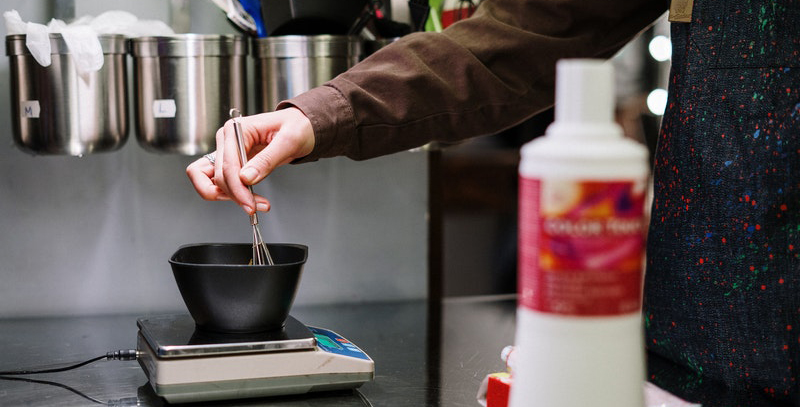There are loads of intricacies for dying hair, that is why having a knowledgeable stylist is key to a good look. However, before we can talk about the intricacies, we have to know the basics. I’m talking about single process or double process color.
This is a pillar to learning and understanding what direction you want to go when it comes to dying your hair. That being, it is something that many people don’t quite get. That is where I come in. We’re going to explain the true differences between the two so that you can walk into the salon with confidence when you ask them for your next look.

Single Process Color
So what is single process hair coloring? It’s actually quite simple. Single process color is anything that only requires one step to accomplish. Typically it’s used as a touch up for your hair to blend the roots with the rest of your dyed hair or cover up grays.
In some scenarios, it can be applied to the entire head to give one color throughout. Think straight black hair or dark brown. However, this is rare because it is typically paired with highlights or some other form of color mixing to give some dimension to the look, which leads up into the other form color processing.
Double Process Color
Double process hair coloring is anything that takes more than one step to accomplish. When it comes to double processing, the possibilities are endless on the combinations of dying your hair in multiple steps.
The most common version is lightening the entire head before applying a color or toner. Think platinum blonde or going from dark to lighter hair. If you’ve ever done this, you know that it is a long process, not just a one and done situation!
Pro and Cons
So what are the benefits of each option? Here are a few to help you choose which option is better for you:
1. Single process color can fall flat.
Like I mentioned, a single process color is one color only. While it can be extremely useful for root touch ups or even highlights on your natural hair, it can fall flat if used across your entire head.
Imagine dying your hair dirty blonde for the first time with no definition. You more than likely won’t like the results. If you are taking the leap and dying your entire head a new color, you might not want to try a single process color option.
2. Double process color takes longer.
Double process color is a long process, so you can expect a lot of hours in the salon. With long salon hours comes lots of chemicals on your hair. This is where it can get tricky, especially for those with damaged hair beforehand.
If you are looking for a process that is going to give you minimal hair damage, then you 9 times out of 10 will want to steer clear of double process hair coloring.
3. Price
Both options can get a bit pricey, but because of the length of time and labor that goes into a successful double process hair coloring, it runs much higher than single process options typically. Like anything, prices will vary depending on what specific look you are getting, the stylist that you go to, and the product you will need to achieve the look.
Overall, however, if you are running tight on cash, you will have more success choosing a single process color option.
Options to Try
Looking for some inspiration? Here are some of my favorite options for single and double processing:
- Caramel Highlights: For those with darker locks, caramel highlights are a beautiful way to add dimension without using bleach or losing your natural color. It’s also great for fall and winter!
- Pop of Color: Who doesn’t love adding color to your life? Try adding some pink or purple highlights or ombre. If your hair is light enough, this can be a single process color. If not, you might need to bleach your hair beforehand.
- Inverse Root Touchup: If you’re feeling really risky, try an inverted root touch up. This works best for those with lighter hair. Add a drastic darker shade onto the top of your hair and blend it with the bottom section. This might sound a tad backwards, but the results are fresh, unique, and stunning!


